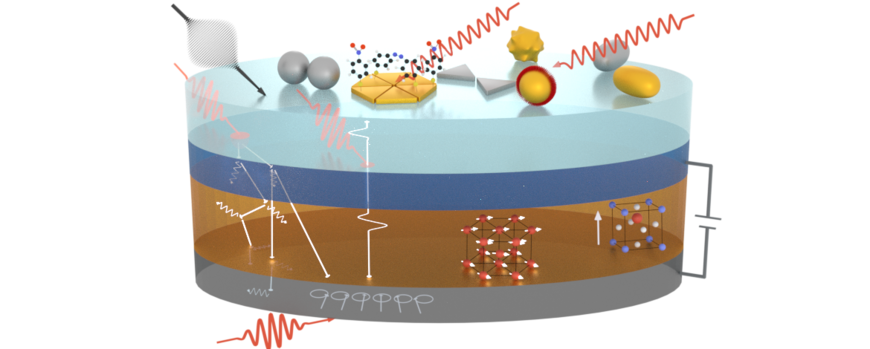
Prof. Dr. Matias Bargheer
Universität Potsdam
About:
Matias Bargheer is professor of physics at the University of Potsdam (UP) and head of the joint research group “Ultrafast Dynamics” at the Helmholtz-Center Berlin for Materials and energy (HZB) since 2009. In 2007 he received the Gustav-Hertz Award of the german physical society for his work on development and application of femtosecond x-ray diffraction. In recent years he has been a guest scientist at the Institut Jean Lamour at the Université de Nancy in France.
His broad research interests range from picosecond ultrasonics over ultrafast magnetism and ferroelectricity to plasmon assisted chemistry. These fields are connected by the topic of non-equilibrium heat transport at the nanoscale and by the application of ultrafast laser techniques.
We investigate coherent and incoherent non-equilibrium phenomena at the nanoscale initiated by various external stimuli, e.g. light and electromagnetic pulses. While incoherent processes transport heat and charges and may drive phase transitions and chemical reactions, coherent dynamics range from strain- and spin waves to strong coupling in exciton-plasmon systems.
Our focus is on a time-domain description of transporting and transforming energy among various excitations of matter. Transient strain and lattice dynamics in general are central observables in solids that are often connected and thus sensitive to other excitations such as hot electrons, lattice vibrations (phonons) and spin waves, electron-and phonon excitations, as well as the latent heat of phase transitions. We aim at controlling strain waves in order to advance the field of nonlinear phononics and identify means of strain-assisted manipulation of magnetic and ferroelectric order. Polaritons, in particular plasmons, couple macroscopic light fields into the nanoworld, acting as an antenna for the chemical, electronic, magnetic or phononic excitations.
Typical research questions of the group involve ultrafast excitations, electron-phonon interaction, strain and heat as a driver of or sensor for ultrafast magnetism, ferroelectric switching and chemical reactions.
We attempt to create a special perspective on these phenomena by combining our experimental workhorses, which are ultrafast versions of x-ray diffraction, magneto-optics, transient absorption and reflection as well as time-resolved Raman scattering. We synthesize plasmonic nanostructures such as nanorods or nanostars embedded in soft condensed matter, e.g. nanolayered polyelectrolytes, metallic nanorods and nano-stars, whereas solid nanostructures are provided by our collaboration partners.
Publications: (please click here for publications)

